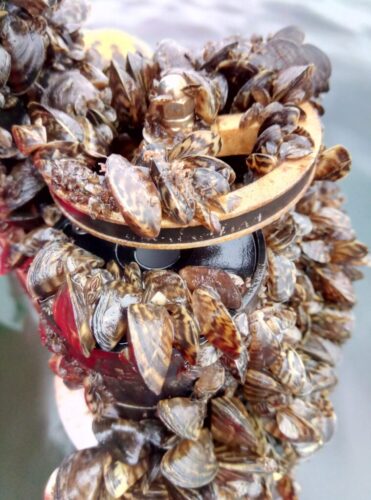
Continuous Metabolic Monitoring with the miniDOT® Logger
May 22, 2023
Understanding Algal Activity in Oligotrophic Waters
July 10, 2023The Marvelous Missing miniDOT®
Project Details
- PRODUCT(S): miniDOT® Logger, miniWIPER for miniDOT
- APPLICATION: Surface Water
- PARAMETER: Dissolved Oxygen, Temperature
- LOCATION: Berlin, Germany
- ORGANIZATION: terra4
- RECOGNITION: terra4

When miniDOTS Go Missing
Lake Tegel – or Tegeler See to the local Berliners– is the second largest lake in Berlin. The sprawling lake spans roughly 4.6 square kilometers, encompassing several islands and, until recently, three missing miniDOT® Loggers. The Loggers were deployed in the lake’s waters in 2020 on a monitoring chain, had disappeared without a trace soon after their initial deployment. Although the circumstances of the loggers’ initial disappearance remain a mystery, the devices’ fortuitous reappearance may come with some answers. Thanks to the superior technology and engineering that goes into PME’s miniDOT Logger, these lost loggers have remained fully functional and recorded data every thirty minutes of their nearly three-year journey.
Three Years Later
Despite the meticulous planning that goes into every project, experienced researchers are aware that even the best laid plans can go awry, particularly in the face of natural disasters or global pandemics. No one can plan for every unforeseen contingency; however, PME believes the upending factor should never be technological malfunction. This commitment to reliability is further evidenced by the condition of these recovered miniDOTs. Despite being lost to the lake for three years, each maintained consistent operation and collected reliable data.

Each miniDOT is manufactured with two double AA lithium batteries and feature a button-battery backup, turning disruptions in data collection into opportunities for researchers rather than ruinous. One of the found loggers had been equipped with antifouling measures; the miniWIPER and a copper anti-fouling plate; this specific device boasted a pristine optode despite the extensive biofouling encrusting the Logger’s housing – serving as an impressive testament to the miniDOT’s unparalleled design and durability.
When the world throws a wrench into research plans, the miniDOT remains undaunted!
This story was brought to PME’s attention thanks to international distributors at terra4, who sold the miniDOTs featured in this case study. To learn more about terra4 visit their website here.
Product Description
The miniDOT® Logger is a completely submersible instrument that logs dissolved oxygen and temperature measurements. Data is recorded on the internal SD card and operational functions, like setting time and sample intervals, can be accomplished via USB cable. The oxygen sensor is an optode that measures dissolved oxygen concentration in water through a fluorescence method. The miniDOT® can withstand temperatures ranging from 0 – 35°C with a depth rating of 300 meters.

